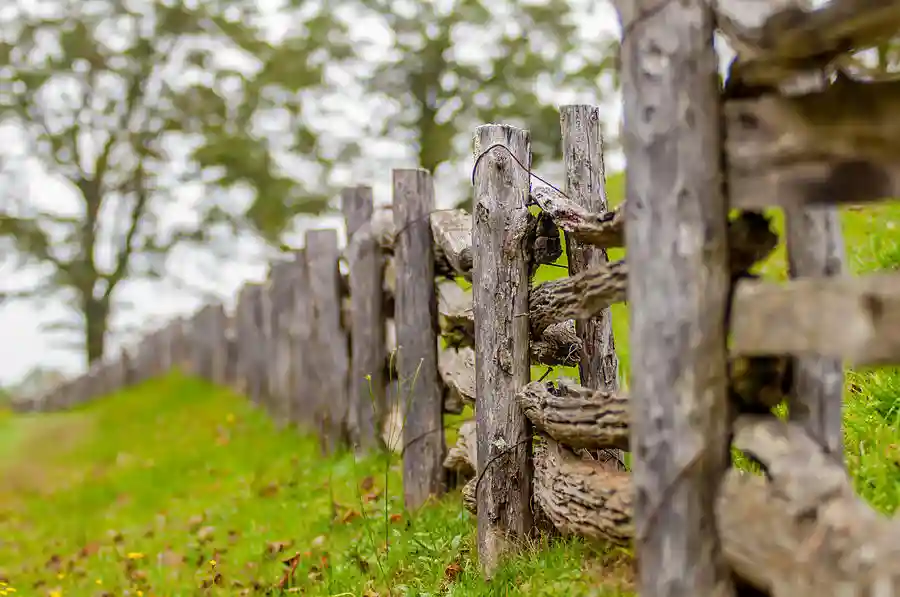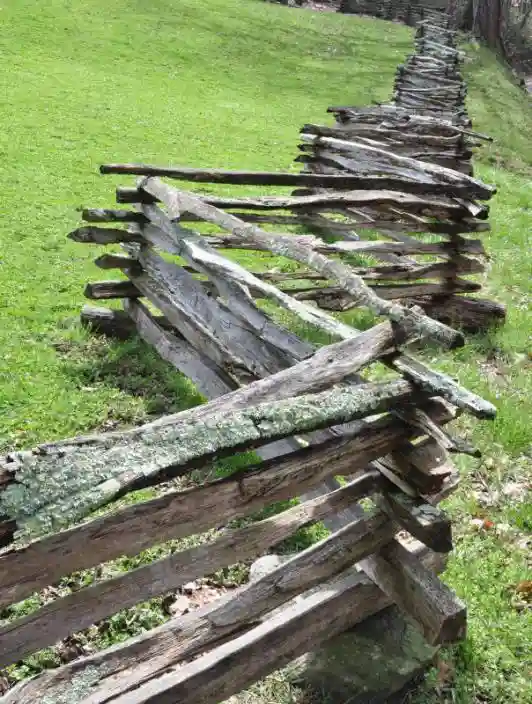But not all split rail fences are created equal. At Black Locust Lumber, we offer naturally durable, chemical-free Black Locust split rail options that outperform pressure-treated and imported alternatives on every front.
Why Choose a Split Rail Fence?
Split rail fencing is more than just a classic aesthetic—it's a practical, low-maintenance solution that’s ideal for:
- Defining property lines
- Containing livestock or pets
- Adding visual interest to landscapes
- Protecting gardens and pathways
Its open style makes it particularly popular for parks, trails, and farms where visibility, airflow, and minimal obstruction are key. Whether you’re a homeowner wanting a charming border, or a land manager protecting wide open fields, split rail fencing offers a perfect balance of beauty and function.

The Different Types and Styles of Split Rail Fencing
Not all split rail fences look the same. The style you choose can impact both the appearance and the function of your fence. Below are the most common types and styles used today.
Two-Rail Split Rail Fence
The two-rail split rail fence is one of the most popular and economical options. It features two horizontal rails between each fence post, creating a low-profile, open look. This style works perfectly for decorative purposes, marking boundaries without obstructing views. It’s also a favorite for large properties, public parks, and suburban homes where a subtle, rustic appearance is desired.
Three-Rail Split Rail Fence
A three-rail split rail fence is a sturdier and slightly taller option than the two-rail style. It offers more containment, making it suitable for keeping in pets, livestock, or horses while still maintaining an open, welcoming feel. This style is commonly seen on farms, ranches, and properties that need to balance beauty with functionality.
Zigzag or “Worm” Fence
The zigzag split rail fence, also known as a “worm” fence, has a rich history in early American farming. Instead of using posts set into the ground, the rails are stacked in a zigzag pattern, eliminating the need for post holes. This design is perfect for rocky or hard soil where digging is difficult. It also adds a distinctive historic charm that works well for period-style properties and rural landscapes.
Mortised Split Rail Fence
A mortised split rail fence features posts with pre-cut holes (mortises) that the rails slide into, creating a more polished and secure connection. This style is durable and easier to assemble than traditional split rail designs because the rails lock neatly into place. Mortised fences are popular for both residential and commercial settings where a cleaner, more refined look is desired.
Locust Post and Rail Fence
A locust post and rail fence is essentially a mortised fence made specifically with Black Locust fence posts—one of the most durable woods available. The combination of Black Locust posts with either hardwood or softwood rails gives this style unmatched longevity. At Black Locust Lumber, we supply locust posts that can last for decades without chemical treatment, making them ideal for sustainable and low-maintenance fencing.
Board-and-Rail Hybrid Fence
Some property owners prefer a board-and-rail hybrid fence, where traditional split rails are combined with flat wooden boards for added privacy or style. This hybrid design can blend rustic and contemporary aesthetics, making it versatile for different landscapes.
Decorative Split Rail Fence with Wire Mesh
If you love the open look of split rail fencing but need added security for pets or small children, you can attach wire mesh to the inside of the rails. This keeps small animals safely contained without sacrificing the rustic beauty of the split rail style. It’s a practical choice for residential backyards and community parks.
Black Locust: The Superior Choice for Split Rail Fence Posts
Most conventional split rail fence posts are made from softwoods like pine or cedar, which require chemical treatments to survive outdoor conditions. These treatments can leach into the soil and eventually fail. In contrast, Black Locust wood is naturally rot-resistant, boasting a lifespan of 30–50+ years with no preservatives required.
Explore our Black Locust fencing materials
Benefits of choosing Black Locust for your split rail fencing include:
- Unmatched Durability – Naturally resists rot, insects, and moisture
- Sustainable & Local – Responsibly harvested from U.S. forests, reducing environmental impact
- Low Lifetime Cost – Fewer replacements and repairs mean real long-term savings
- Safe for Animals & Soil – No toxic chemicals, making it ideal for organic farms and pet areas
Comparing Black Locust to Pressure-Treated Wood
When choosing materials for your split rail fencing, it’s important to compare not only the upfront cost but also the long-term performance. Black Locust consistently outperforms pressure-treated pine in every category. While pressure-treated wood may last around 5–15 years before showing signs of decay, Black Locust can last 30–50+ years without the need for chemical treatments. This means fewer replacements and far lower lifetime costs.
Pressure-treated pine relies on chemical preservatives to resist rot and insects—chemicals that can leach into the soil over time. In contrast, Black Locust naturally resists decay, moisture, and insect damage, making it a healthier, more sustainable choice for your property. It’s also a low-maintenance option; once installed, it requires little to no upkeep compared to treated wood, which often needs regular sealing or repairs.
When considering environmental impact, Black Locust has a much smaller footprint. It’s locally sourced, free of harmful additives, and completely safe for use around livestock, pets, and gardens. If your goal is to build a fence that’s beautiful, environmentally friendly, and built to last for generations, Black Locust is clearly the superior choice.

Where to Use Split Rail Fences
- Rural properties
- Horse and livestock enclosures
- Public parks and recreation trails
- Historic restorations and preservation projects
- Sustainable developments and LEED-certified landscapes
Installation Tips for Split Rail Fence Posts
Proper installation of split rail fence posts is essential for longevity. Here are a few tips:
- Set posts at least 2 feet deep for stability
- Use gravel or drainage stone at the base to prevent rot (although Black Locust holds up even without it)
- Space posts approximately 10 feet apart, depending on the rail length
- For steeper slopes, adjust rail height to maintain an even appearance
Need more help? Our team is happy to offer installation guidance or connect you with trusted contractors in your area.
Final Thoughts: A Fence That Lasts Generations
If you're searching for a split rail fence that blends beauty, function, and environmental responsibility, Black Locust is the gold standard. It’s an investment that pays off in durability, sustainability, and aesthetic value—while saving you from frequent replacements or chemical maintenance.
Ready to build a fence that lasts for generations?
Request a quote or talk to our team today.








